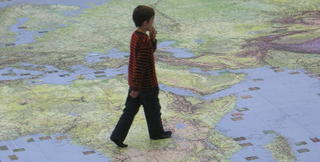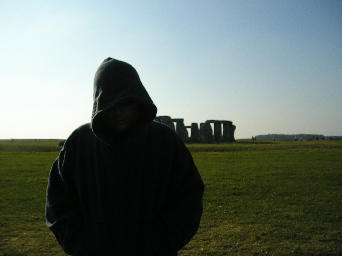Museum Days
Tuesday, I headed to the British Museum. The first thing I saw was a small collection of stones. I walked into the small exhibit room and the attendant motioned me over to the small stand in front of her. On the stand was a black rock. As she put my hand on the rock, she told me what it was: a stone tool from the Olduvai Gorge in Tanzania. She encouraged me to pick up the stone. It fit well in my hand. She told me it was 1.8 million years old. She moved my fingers across the stone’s sharp edges and had me imagine what that stone might have been used for: cleaning skins, cutting meat, shaping wood? In my hand I was holding the oldest human tool ever found. And it fit perfectly.
That alone would have been enough but I decided I should see some more. After all, the British Museum has a huge collection of artefacts. In fact, I had no idea just how huge the collection was. The Rosetta Stone, Greek and Roman pottery and sculpture, Asian artefacts, African masks and clothing, Native American tools, Mexican articles…it was impossible to see everything.
A few things in particular caught my eye…
After visiting the British Museum, I went to the Transport Museum. Located on the Covent Garden Piazza, this museum follows the history of London’s public transport from horse-drawn carriages and horse-drawn trams to double-decker busses and the Underground. It’s great for kids because there are vehicles to climb on, exhibits to touch, and things to try out.
That alone would have been enough but I decided I should see some more. After all, the British Museum has a huge collection of artefacts. In fact, I had no idea just how huge the collection was. The Rosetta Stone, Greek and Roman pottery and sculpture, Asian artefacts, African masks and clothing, Native American tools, Mexican articles…it was impossible to see everything.
A few things in particular caught my eye…
The Reading Room – Part of the Museum’s library is housed in this immense, domed room.
Horsemen of apocalypse – these four large papier-mâché sculptures hang from the ceiling as part of the exhibit on ways cultures handle death.
Ganesh – tucked away in a corner of a stairway is a sculpture of the elephant-headed Indian god Ganesh, honoured for removing barriers and is therefore venerated by travellers.
An Aztec picture folio – In the Aztec section, I saw what looked like a comic book. In reality, it was a 14th century picture account of 800 years of history.
A monkey head – Far from being just a monkey head, this sculpture was inlaid with a mosaic of tiny turquoise pieces.
African cloth armour – In the African section, one display had colourful cotton quilted armour for a man and his horse.
After visiting the British Museum, I went to the Transport Museum. Located on the Covent Garden Piazza, this museum follows the history of London’s public transport from horse-drawn carriages and horse-drawn trams to double-decker busses and the Underground. It’s great for kids because there are vehicles to climb on, exhibits to touch, and things to try out.





0 Comments:
Post a Comment
<< Home